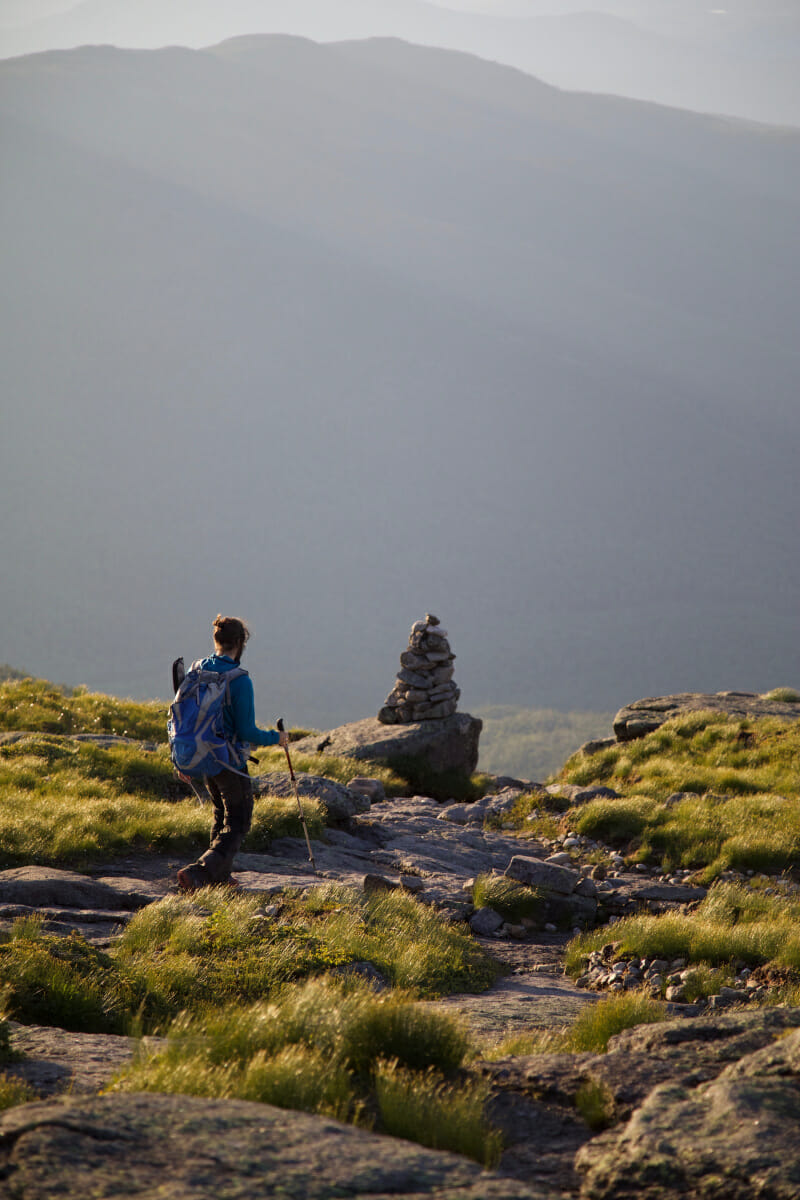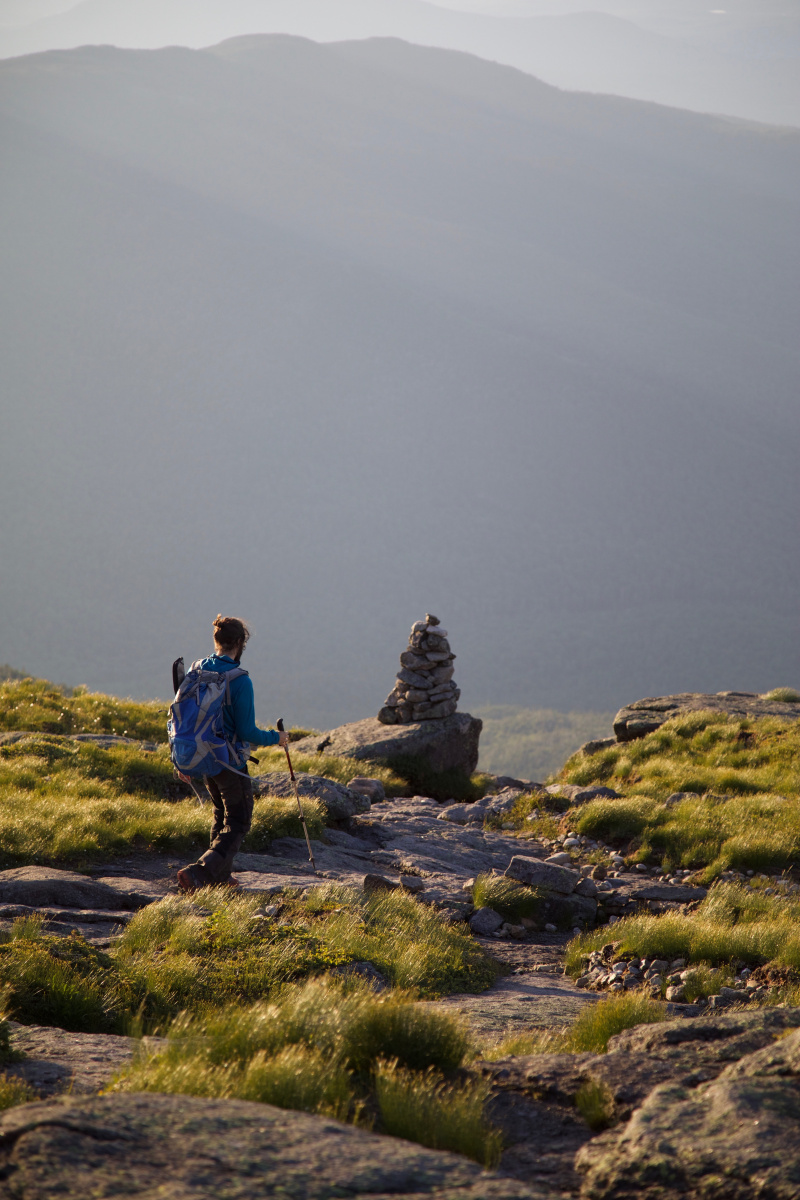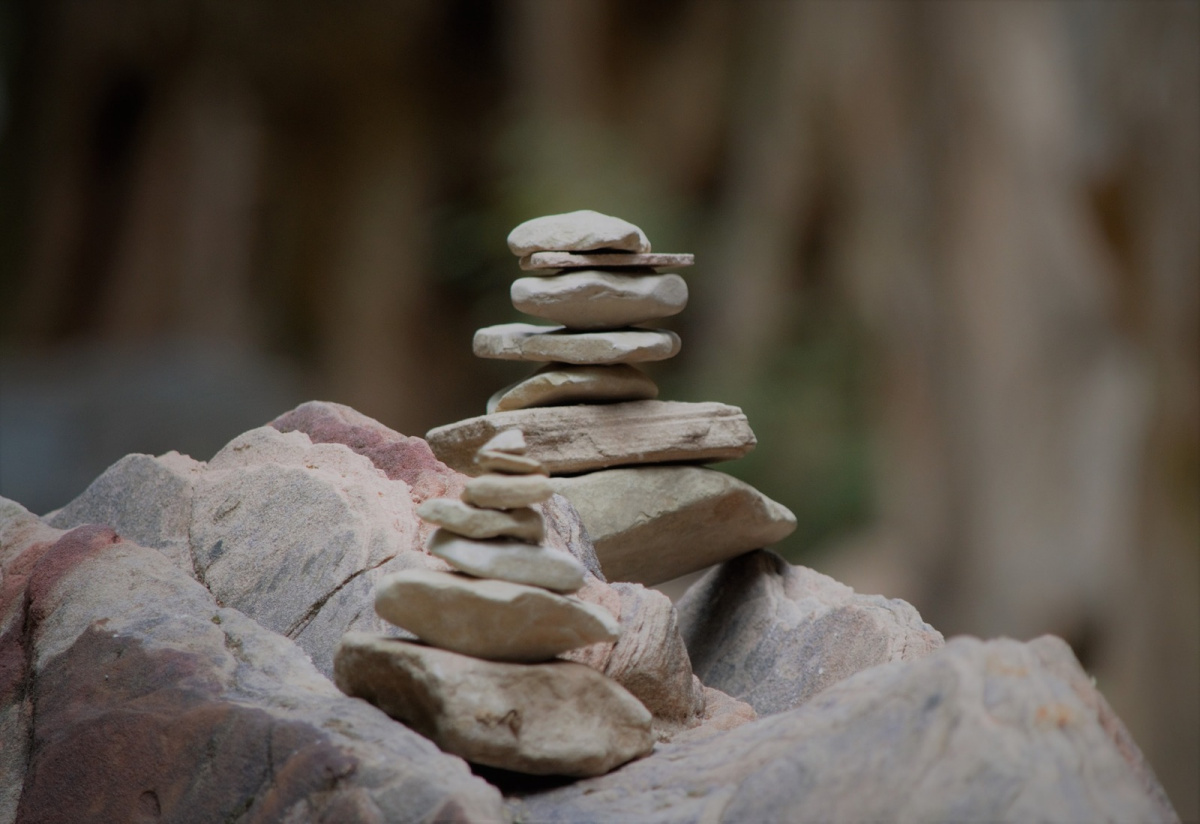News & Updates
These Impacts Are Stacking Up!


Lake Placid, NY: There is nothing more annoying than being witness to the impacts we despise most. For some, rock stacks and cairns fall into this precarious category. Building rock stacks can have serious ecological impacts. However what about the local ethic and when are cairns important to heritage, reducing impacts, and even public safety?
Cairns vs. Rock Stacks
The differences between the two are immense. A cairn is an officially established pile of rocks designed to mark a trail. These are made by land managers to properly blaze the designated trail so hikers will follow the most durable surfaces. In many cases, cairns are used above tree line and in alpine type environments where painted blazes are not as visible in the relatively open landscape. Established cairns must be left as they are, following the fourth principle of Leave No Trace, Leave What You Find. Tampering with them can lead other visitors to become lost and/or trample sensitive vegetation.
On the other hand, rock stacks are piles made by individuals for fun or artistic creativity. People build these stacks most commonly in streams, rivers, and areas with a plethora of cobble to pebble sized rocks. For some, rock stacks are an expression of creativity or are a fun activity to do with friends.

Impacts of Rock Stacking
The three primary potential impacts of public rock stacking are as follows. The first is the ecological impact of removing rocks from their location. Any time a rock is removed from its embedded location; insects, aquatic macroinvertebrates, fish, and animals can be forced from their hiding places and homes. For these wild creatures this means risking their security and prematurely becoming food to larger predators.
The second impact leads to erosion. Removing rocks from sand, sediment, and soils generates a faster rate of erosion. This is due to the rock’s previous state. An embedded rock helps to hold soils in place, locking the surface and helping to effectively drain excessive water, and can even generate new plant life. When these rocks are removed from their natural resting place the soils are also released greatly increasing the rate of erosion in a given location.
Lastly, the impact that gets under the skin of many; aesthetic impact affects the wilderness experience. The interrupted visual cues of visitor created rock stacks takes away from what is natural and inserts a human reminder that the visitor is not alone. People getting into the great outdoors are not always looking for a reminder that people frequent the area. Instead, people look to get away from the crowds and maybe even find some solitude. In extreme cases this results in user conflict or confrontation.

An Easy Alternative
With all of the above in mind, we have some recommendations for having a great time outside, rock stacking and hiking on those alpine routes alike. By respecting the following recommendations we can keep our wild spaces wild, while enjoying rock stacking, and the freedom of expression that comes along with it.
- Leave What You Find, officially designated cairns need to be left in place. Altering these cairns in any way poses a threat to visitor safety, and the ethic of the area visiting.
- When making your own rock stacks stick to durable surfaces. Many times along streams and rivers, one will be walking in riparian areas. Use designated trails and durable surfaces to minimize impacts.
- When collecting rocks only collect ones that are loose from soils, sands, and silts. This will minimize the impact of erosion.
- Build your stacks, take pictures, and then return all of the used rocks to their original locations.
- Leave the area how it was originally found to maintain the wildness of the area. Pack out all trash, including food scraps.
- Remember that other people may be visiting the area while you are there. If listening to music consider using headphones to let nature’s sounds prevail.
Using these techniques we can all do our part to leave no trace while having a great time visiting the places we love. After all, public lands are for all of us to utilize, and for all of us to respect.
Enjoy your world & Leave No Trace,
Steph & Andy
Subaru/Leave No Trace Traveling Trainer Team East
Leave No Trace's Stephanie Whatton and Andy Mossey are part of the 2017 Subaru/Leave No Trace Traveling Trainer Program that provides free, mobile education to communities across the country. Proud partners of this program include Subaru of America, REI, Eagles Nest Outfitters, Deuter, Thule, Klean Kanteen, Smartwool, and Taxa Outdoors.
Let’s protect and enjoy our natural world together
Get the latest in Leave No Trace eNews in your inbox so you can stay informed and involved.
